Global travelers heading to Japan for the winter are most likely to visit to some of the world’s top destinations for skiing and snowboarding. Long before Japan’s first ski resorts opened locals were celebrating winter and the pristine snow environs with traditional festivals rife with fun and time-honored cultural activities.
Find all the information you need to locate these cultural destinations with help from the services of Global Mobile, which offers both pocket WiFi and unlimited prepaid SIM cards that can easily help you stay connected anywhere in Japan.
With Global Mobile as your handy sidekick, check out five of Japan’s top destinations for lively, and truly unique, winter festivals.
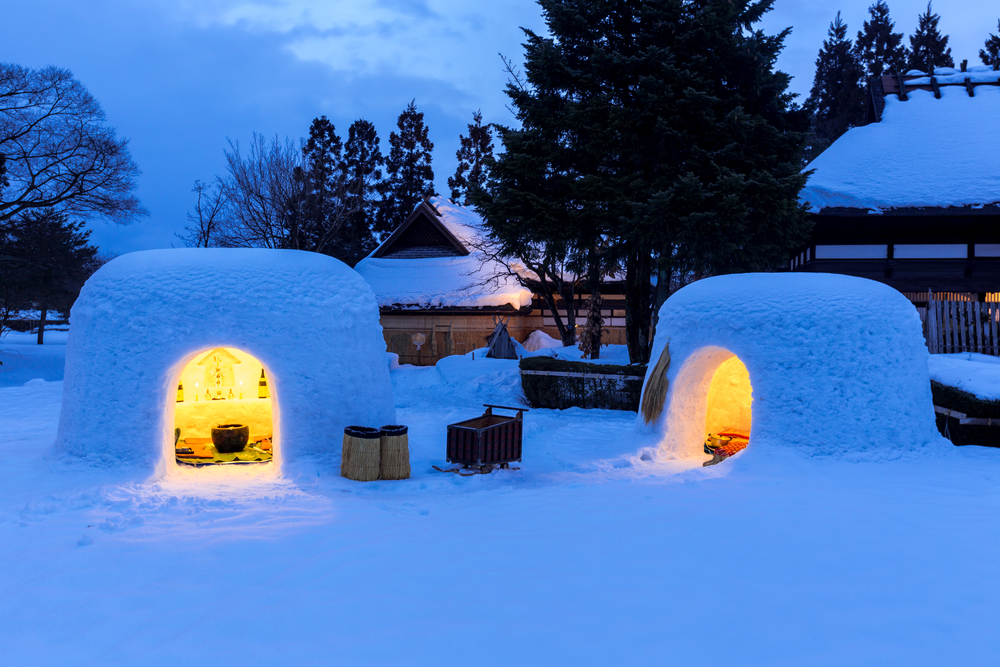
Yokote Kamakura Festival | Photo by Kanuman / Shutterstock.com
Akita Prefecture
Known throughout Japan for its rice, sake and its signature dish – kiritanpo nabe – Akita transforms into a snow country with numerous festivals taking place throughout, with two of them being registered as UNESCO Intangible Cultural Heritage of Humanity.
In Oga Peninsula, on the second Friday, Saturday and Sunday of February the Namahage Sedo Festival takes place. Demon-like gods called the namahage play the drums, perform the namahage dance and scare visitors after descending the hill behind the Shinzan Shrine, sometimes tumbling down on the snow.
Further north, in Kazuno city, on January 2 boys and men perform the sacred Dainichido Bugaku, a dance with over one thousand years of history that was registered as a UNESCO Intangible Cultural Heritage of Humanity in 2009. The Dainichidou Shrine, where the dance is performed, is a great destination in itself. Paintings of bulls covering the walls, a huge tengu mask and similarly sizable arrows are some of the artefacts resting there.
Do not miss the igloo-like snow huts at the Yokote Kamakura Festival held every February 15 and 16 (though the dates are subject to change). Also, buy some candy from Odate Amekko Fair to prevent catching a cold, join the Kariwano Giant Tug of War in Daisen, and watch the Bamboo Battle Festival in Misato – all of which happen throughout February.
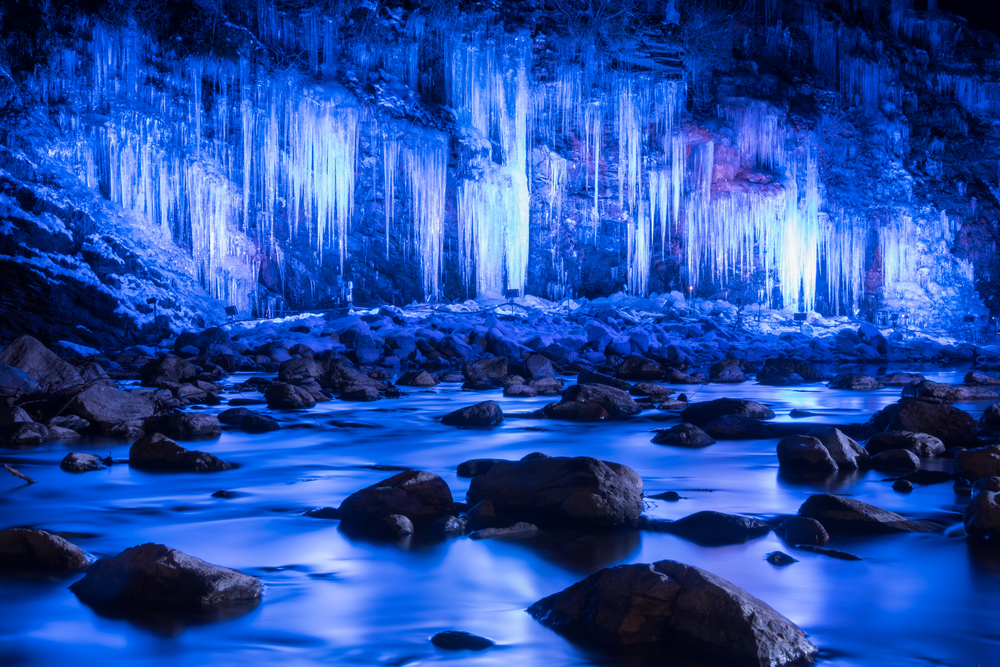
Misotsuchi Icicles | Photo by watayu0821 / Shutterstock.com
Saitama Prefecture
Much closer to Tokyo than Akita Prefecture, Saitama Prefecture has its own array of festivals in winter despite receiving much less snow.
From mid-January to mid-February, the naturally formed Misotsuchi Icicles in Chichibu can be seen hanging from the bluffs along the Arakawa River. The icicles are lit up every night, creating a truly ethereal effect.
On February 3, most of Japan throws beans outside their house or shrine to chase out demons and misfortune within the tradition of Setsubun. However, at the Kijin Shrine in the town of Ranzan a pair of demons, one blue, the other red, are invited in as they are praised as deities of victory. Visitors from all over the country visit the shrine and have beans thrown at them from the two demons in hopes of becoming strong-hearted.
If you enjoy fireworks, do not miss the Chichibu Night Festival on December 2 and 3 to see about 20 floats gathering up, as well as the fireworks that signal the end of festival.
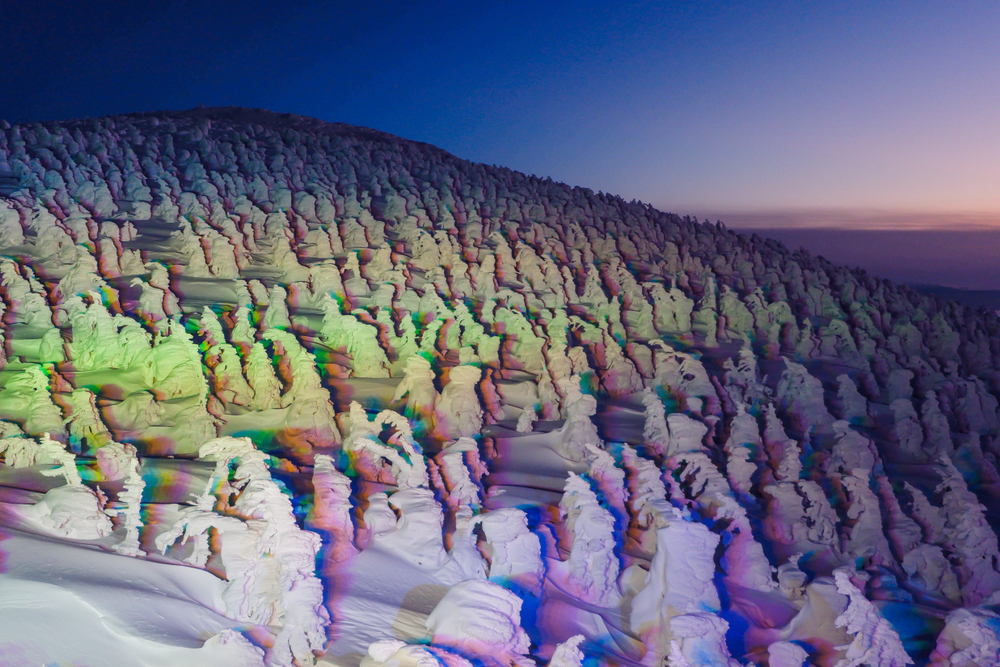
Mount Zao Snow Monsters | Photo by DitsTin / Shutterstock.com
Yamagata Prefecture
The Snow Monsters on the mountains of Zao in Yamagata Prefecture is a popular destination for those not faltered by cold and who want to take pictures of the instagrammable frost-covered trees. At their peak in mid-February, the monsters are lit up at night, turning the landscape otherworldly.
On a different mountain, at the top of Mount Haguro, one of the three of Denwa Sanzan, two Buddhist monks carry out Shinto rituals wishing for a century of good harvest. Preparations for the Shoreisai Festival start mid-December, but the actual festival is held on New Year’s Eve, from around 3pm until after midnight.
Other festivals include the Kasedori Festival at Kaminoyama where men wear an outfit made of straw to resemble the legendary bird, Kasedori, which according to legends put out a fire in the region. That explains them dancing while pretending to be birds and pouring out cold water in freezing temperatures every year on February 11.
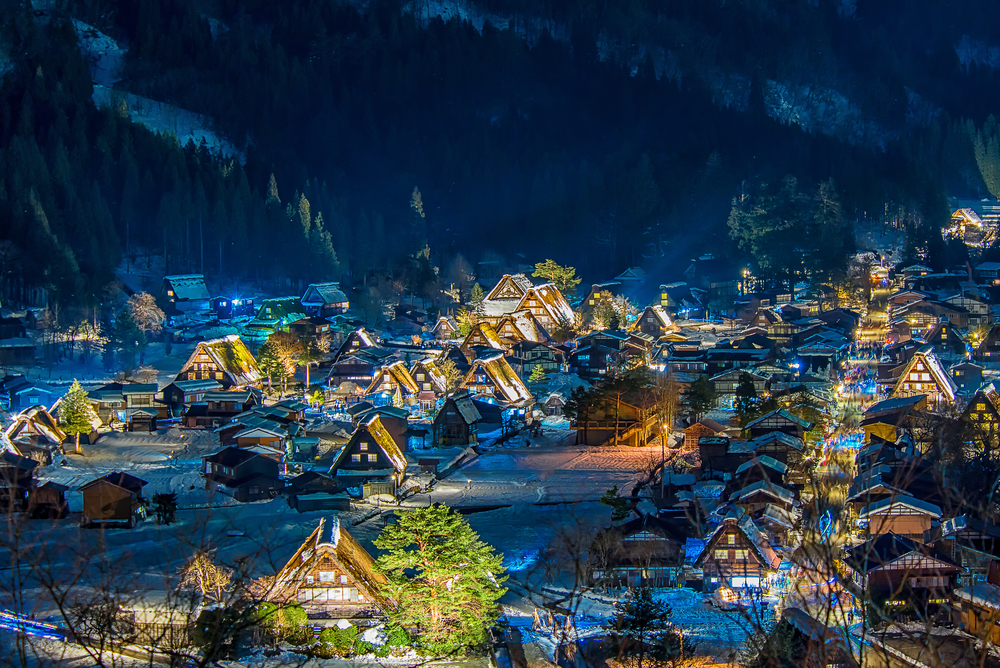
Shirakawa-go | Photo by CW Pix / Shutterstock.com
Gifu Prefecture
With heavy snow and freezing temperatures, Gifu is covered in white, and so are some of its popular tourist spots.
The traditional houses at Shirakawa-go gather snow on their roofs and are lit up with warm white hues every Sunday (with some exceptions) from mid-January to mid-February, making the scenery more picturesque than it already is and turning the whole village into a winter wonderland.
In Takayama city, the Hirayu Otaki waterfall freezes to a halt, in essence being transformed into a naturally made sculpture. From the middle to the end of February, the waterfall is illuminated and various activities and festivities are organized nearby. Make sure to check the schedule before you visit as the program differs every day.
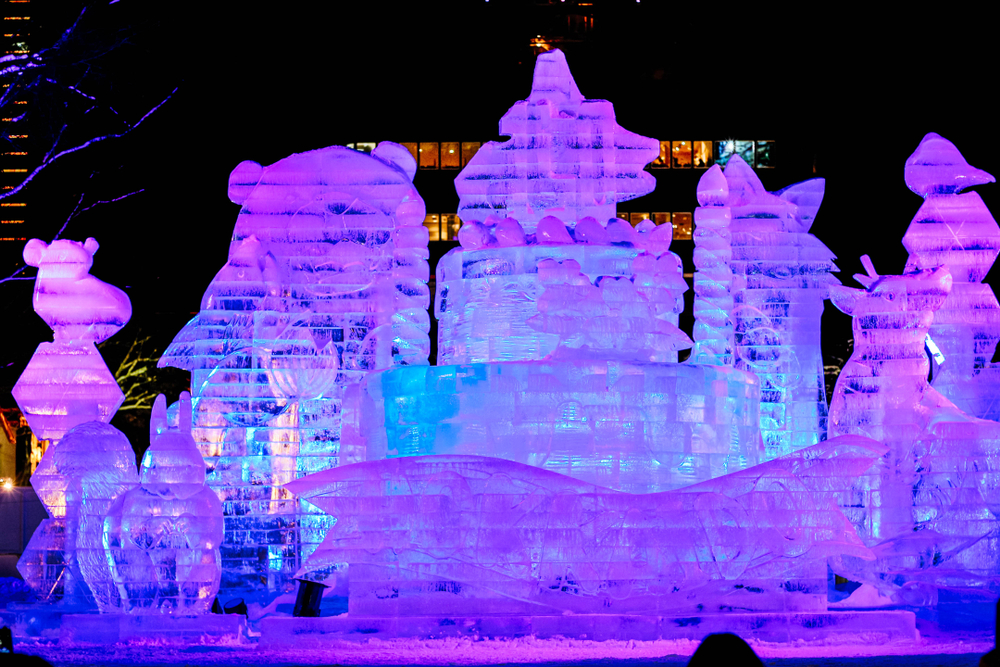
Sapporo Snow Festival | Photo by samshutterstock / Shutterstock.com
Hokkaido
This list would not be complete without the northernmost island of Japan – Hokkaido. Famous for its ski areas and fine powder snow, Hokkaido is home to many winter festivals.
Inarguably the most famous festival, the Sapporo Snow Festival, makes it to TV on channels across the globe and for a good reason. Here you will find masterfully crafted massive snow and ice sculptures, a never-ending list of events for every taste and food stalls lined up one after the other offering a range of festival dishes.
While at the Sapporo Snow Festival, try to make time to visit the Snow Light Path Festival at Otaru. A great many lanterns float in the canal that make Otaru look a lot like Venice, and candle-lit miniature snow huts form a line across the same canal. With its unique townscape and architecture, Otaru is romantic enough as it is, but with the Snow Light Path the romance-o-meter hits red.
The festival in Otaru is held from the second Sunday in February until the third Sunday and usually overlaps with the Sapporo Snow Festival for a few days.
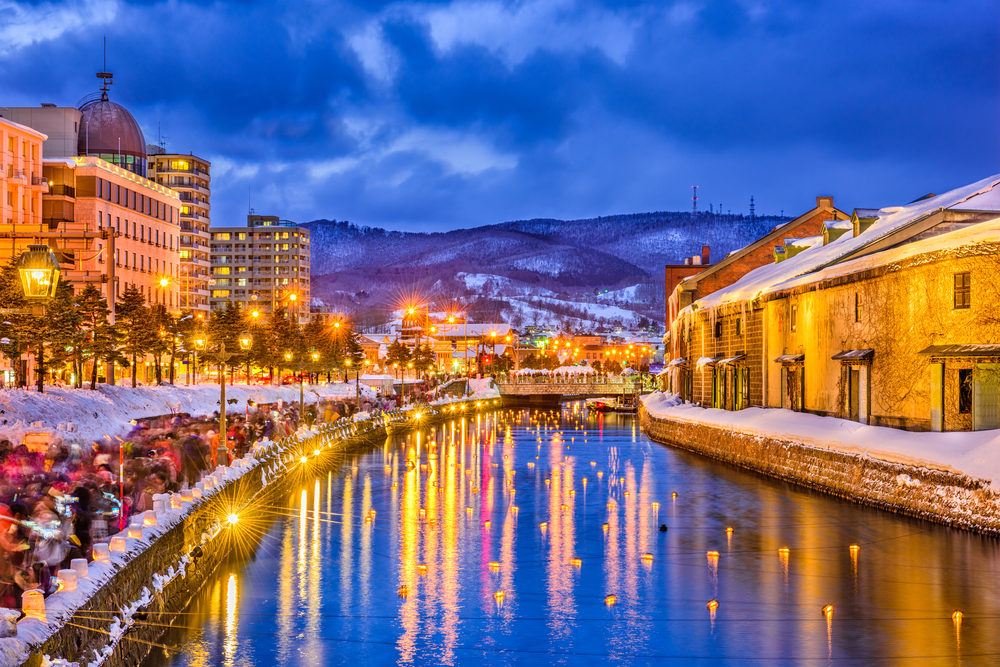
Otaru Snow Light Path Festival | Photo by Sean Pavone / Shutterstock.com
Stay connected during your Japan travels with Global Mobile. With various rental plans starting from ¥480 per day, the Pocket WiFi router can be picked up directly at the airport through advanced application, or it can also be delivered to your accommodation address.
With three convenient, affordable plans (eight-day plan for ¥3,980, 16-day plan for ¥4,980 and a 31-day plan for ¥5,980), Global Mobile’s prepaid SIM card how no restriction for daily data usage. Application and purchase of the SIM card can only be done at the QL Liner Counter located in the International Arrival Lobby (1F) at Narita Airport. Please note counter staff can help with receiving your devices but cannot assist with set-up procedures.
Sponsored Post








